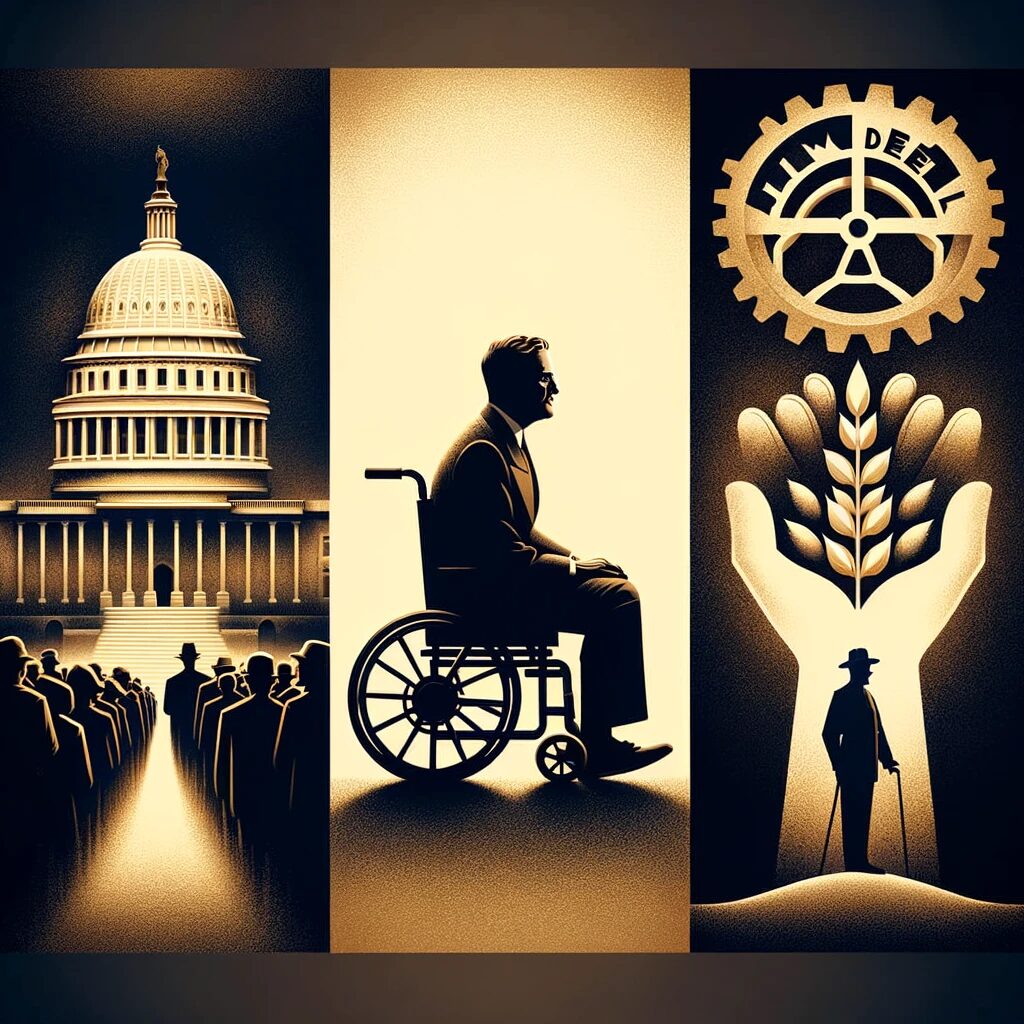Franklin D. Roosevelt
“The only limit to our realization of tomorrow will be our doubts of today.”
In other words, if we doubt ourselves, our potential, or our ability to succeed, we are less likely to take action to achieve our goals.
Doubts can be self-limiting and prevent us from taking risks or pursuing our dreams.
So, to reach our goals and full potential, we need to eliminate our doubts and have faith in ourselves and our skills.
These words are our mindset, which plays a significant role in determining our success in the future.
Franklin D. Roosevelt Brief personal history.
Franklin D. Roosevelt (FDR) was the 32nd President of the United States, serving four terms from 1933 until he died in 1945.
FDR was born to a wealthy family on January 30, 1882, in Hyde Park, New York. He went to Harvard University and Columbia Law School before entering politics in 1910, when he was elected to the New York State Senate.
In 1913, President Woodrow Wilson appointed FDR Assistant Secretary of the Navy. During World War I, he played a key role vital the war effort and was seen as a rising star in the Democratic Party.
In 1920, FDR was the Democratic nominee for Vice President, but the ticket was defeated. He got polio in 1921 and was paralyzed from the waist down. He kept working in politics, though, and in 1928 and 1930, he was elected Governor of New York.
In 1932, FDR beat President Herbert Hoover by a considerable margin to become the next president of the United States. He had to deal with the Great Depression and a demanding job, and his New Deal policies helped millions of Americans feel better. He also led the country through World War II, and his leadership during the war was crucial to the Allied victory.
In 1944, FDR was reelected to an unprecedented fourth term as President, but he died on April 12, 1945, just months into his new assignment. His Vice President, Harry S. Truman, succeeded him as President. FDR’s legacy as a leader who helped the country through some of its biggest problems and pushed for social and economic change has affected American politics and culture.
Episodes.
Franklin D. Roosevelt’s “New Deal” was a series of policies and programs to promote economic recovery and social welfare during the Great Depression in the United States.
As part of the New Deal, the government spent more money, there were new rules for banking and finance, and there were programs to create jobs, like the Civilian Conservation Corps and the Works Progress Administration.
One of the critical ways that Roosevelt communicated his plans and policies to the American people was through his radio broadcasts, which he called “Fireside Chats.”
These broadcasts were meant to make his listeners feel close to him and like he knew them, and they did a great job of helping to build support for the New Deal.
In his first “Fireside Chat,” delivered on March 12, 1933, Roosevelt explained the banking crisis and outlined his plans for addressing it through emergency banking legislation.
The speech was widely praised for its clarity and ability to reassure the public that their money was safe in the banks.
Roosevelt delivered 30 “Fireside Chats” during his presidency, covering various topics related to the New Deal and the nation’s challenges during the Depression.
These broadcasts helped to shape public opinion and build support for Roosevelt’s policies. They remained essential to his legacy as a president who could communicate effectively with the American people.
“New Deal”
Franklin D. Roosevelt’s “New Deal” was a set of economic and social programs that were put into place in the United States during the 1930s in response to the “Great Depression.
” The goal of the New Deal was to help the country, which had been hit hard by the economic crisis, recover and change.
Some of the key New Deal policies included:
The Civilian Conservation Corps (CCC) provided jobs and training for young men in environmental and conservation projects.
The Works Progress Administration (WPA) created millions of jobs through public works projects, such as building roads, bridges, and public buildings.
The Social Security Act provided retirement benefits, unemployment insurance, and assistance to needy families.
The National Recovery Administration (NRA) aimed to stabilize prices and wages and encourage industrial recovery.
The Agricultural Adjustment Act (AAA) aimed to increase agricultural prices by reducing crop surpluses and paying farmers to reduce production.
The Tennessee Valley Authority (TVA) provided economic development and infrastructure projects to the impoverished Appalachian region.
Overall, the New Deal policies of Franklin D. Roosevelt represented a significant shift in the role of government in the economy and society and had a lasting impact on American politics and culture.



コメント